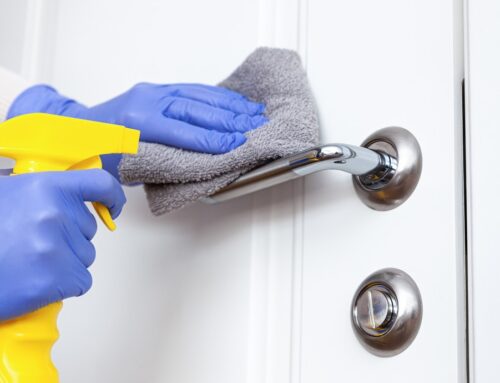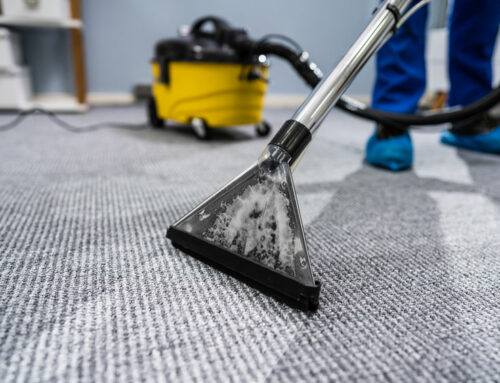Embarking on the journey of kitchen deep-cleaning is not only about achieving a sparkling space but also ensuring a healthier environment where meals are prepared and memories are made. It’s easy for the kitchen to become a breeding ground for grease, grime, and food residue. That’s where deep cleaning comes in. In this comprehensive guide, we’ll walk you through the essential steps for achieving a spotless kitchen that not only looks immaculate but also promotes a healthy living environment. Whether you’re tackling your kitchen for the first time in months or looking for ways to maintain its cleanliness, we’ve got you covered. And for those who prefer to leave the cleaning to the professionals, remember that Mill City Cleaning offers reliable residential cleaning services tailored to your needs.
- Clear countertops and surfaces: Remove small appliances, utensils, and other items from countertops and surfaces to give yourself plenty of room to work.
- Empty the refrigerator and freezer: Remove all food items from the refrigerator and freezer and place them in a cooler to keep them cold while you clean. Dispose of any expired or spoiled food items.
- Declutter cabinets and drawers: Take the opportunity to declutter and organize cabinets and drawers by removing unnecessary items and reorganizing items that you plan to keep.
- Remove and clean light fixtures: Take down light fixtures and wash them with warm, soapy water to remove dust and grime. Wipe down light bulbs with a damp cloth.
- Pull out appliances and clean behind them: Move large appliances such as the refrigerator, stove, and dishwasher away from the wall to clean behind and underneath them. Vacuum or sweep up any crumbs or debris.
- Protect floors and nearby surfaces: Lay down towels or a drop cloth to protect floors from drips and spills during the cleaning process. Consider covering nearby surfaces such as countertops and tables to prevent them from getting splattered with cleaning solutions.
- Open windows for ventilation: Ensure adequate ventilation by opening windows and doors to allow fresh air to circulate throughout the kitchen while you clean. This will help reduce fumes from cleaning products and speed up drying times.
Deep Cleaning the Kitchen: Step-by-Step Guide
Now that your kitchen is prepared, it’s time to dive into the deep cleaning process. Follow these step-by-step instructions to ensure that every surface and appliance in your kitchen receives the thorough cleaning it deserves.
Kitchen Deep-Cleaning Steps
- Start with the sink: Begin by clearing out the sink and removing any dishes or food debris. Sprinkle baking soda over the surface of the sink and scrub it with a sponge or brush to remove stains and buildup. Rinse thoroughly with water and dry with a clean towel. For stainless steel sinks, use a stainless steel cleaner to restore shine and remove water spots.
- Clean the countertops: Wipe down the countertops with an all-purpose cleaner or a mixture of vinegar and water. Pay special attention to areas around the sink and stove, where spills and splatters are common. Use a scrub brush or sponge to remove any stubborn stains or dried-on food residue. For granite or marble countertops, avoid using acidic cleaners, as they can cause damage. Instead, use a mild dish soap or a pH-neutral cleaner specifically formulated for stone surfaces.
- Degrease the stovetop: Remove grates and burner covers from the stovetop and soak them in hot, soapy water to loosen grease and grime. While the grates are soaking, spray the stovetop with a degreaser and allow it to sit for a few minutes to penetrate stubborn grease buildup. Use a scrub brush or sponge to scrub the stovetop, focusing on areas around burners and knobs. Rinse thoroughly with water and dry with a clean cloth.
- Clean the oven: If your oven has a self-cleaning function, follow the manufacturer’s instructions to run a cleaning cycle. For manual cleaning, remove racks and use an oven cleaner to spray the interior surfaces of the oven. Allow the cleaner to sit for the recommended time to loosen baked-on grease and food residue. Use a scrub brush or sponge to scrub the interior surfaces, then wipe clean with a damp cloth. Clean oven racks separately by soaking them in hot, soapy water and scrubbing them with a brush. Rinse and dry thoroughly before replacing them in the oven.
- Scrub appliances: Wipe down the exterior surfaces of appliances such as the refrigerator, dishwasher, and microwave with a damp cloth or all-purpose cleaner. Pay attention to handles and buttons, where fingerprints and spills tend to accumulate. Use a toothbrush or scrub brush to clean any crevices or grooves. For stainless steel appliances, use a stainless steel cleaner to remove fingerprints and smudges and restore shine.
- Clean cabinets and drawers: Wipe down cabinet doors and drawer fronts with a damp cloth or all-purpose cleaner to remove dust and grease. Use a mild dish soap or wood cleaner for wooden cabinets. Pay attention to handles and hardware, where dirt and grime can build up. For deep cleaning, remove items from cabinets and drawers and vacuum or wipe down interior surfaces. Consider lining shelves and drawers with shelf liners to protect surfaces and make cleaning easier in the future.
- Finish with the floors: Sweep or vacuum the kitchen floor to remove crumbs and debris. Use a mop and bucket filled with warm, soapy water to mop the floor, paying extra attention to high-traffic areas and spills. For tile or vinyl floors, use a mild floor cleaner or vinegar and water solution. For hardwood floors, use a cleaner specifically formulated for wood surfaces. Allow the floor to air dry or dry with a clean towel.
By following this step-by-step guide, you can achieve a deep-cleaned kitchen that is free from dirt, grease, and food residue. With every surface sparkling and sanitized, you’ll be able to enjoy cooking and entertaining in a fresh and inviting space.
Maintaining a Clean Kitchen: Tips for Daily and Weekly Cleaning
Once you’ve completed your deep cleaning session, it’s important to establish a regular cleaning routine to keep your kitchen looking its best.
Tips for Maintaining a Clean Kitchen on a Daily and Weekly Basis
- Wipe down countertops and surfaces daily: Take a few minutes each day to wipe down countertops, tables, and other surfaces with a damp cloth or disinfectant wipe. This will help prevent the buildup of crumbs, spills, and bacteria.
- Clean dishes and utensils promptly: Avoid letting dirty dishes pile up in the sink or on countertops. Wash dishes, pots, and pans as soon as possible after use, or load them into the dishwasher for easy cleaning.
- Sweep or vacuum floors daily: Keep floors clean and free from crumbs and debris by sweeping or vacuuming them daily. This will prevent dirt from being tracked around the kitchen and reduce the risk of slips and falls.
- Empty the trash regularly: Dispose of kitchen waste in a sealed trash bag and empty the trash bin regularly to prevent odors and bacteria from building up.
- Deep clean appliances as needed: Schedule regular deep cleaning sessions for appliances such as the oven, refrigerator, and dishwasher to remove built-up grease, grime, and food residue. Refer to the manufacturer’s instructions for specific cleaning recommendations.
- Declutter and organize regularly: Take the time to declutter and organize cabinets, drawers, and pantry shelves on a regular basis. Donate or discard items that you no longer use and reorganize items to make them easily accessible.
By incorporating these daily and weekly cleaning tasks into your routine, you can maintain a clean and organized kitchen that is a joy to cook and entertain in. With a little effort and consistency, you can enjoy a fresh and inviting space that you’ll be proud to show off to family and friends.
Benefits of Professional Kitchen Deep Cleaning Services
While DIY kitchen cleaning can be effective, there are several benefits to hiring professional cleaning services like Mill City Cleaning for your kitchen deep cleaning needs:
- Expertise and experience: Professional cleaners have the knowledge, skills, and experience to tackle tough stains and grime effectively.
- Time-saving: Outsourcing your kitchen deep cleaning to professionals frees up your time to focus on other priorities.
- Thorough cleaning: Professional cleaners use specialized equipment and techniques to ensure that every surface and appliance in your kitchen is thoroughly cleaned and sanitized.
- Customized cleaning plans: Professional cleaning services can tailor their services to meet your specific needs and preferences, ensuring that your kitchen is cleaned to your satisfaction.
- Peace of mind: With professional cleaners on the job, you can relax knowing that your kitchen is in capable hands and will be cleaned to the highest standards.
By investing in professional kitchen deep cleaning services, you can enjoy a clean, fresh, and inviting kitchen without the hassle and stress of doing it yourself.
Conclusion
A clean and well-maintained kitchen is the heart of a happy home. By following the tips and guidelines outlined in this blog post, you can achieve a deep-cleaned kitchen that is free from dirt, grease, and food residue. Whether you tackle the cleaning yourself or enlist the help of professional cleaning services like Mill City Cleaning, maintaining a clean kitchen is essential for a healthy and enjoyable cooking and dining experience. So roll up your sleeves, gather your cleaning supplies, and get ready to transform your kitchen into a sparkling oasis of cleanliness and comfort.





